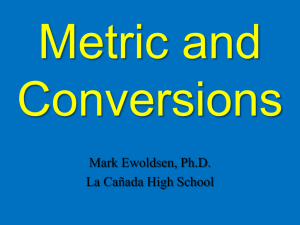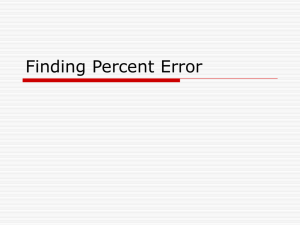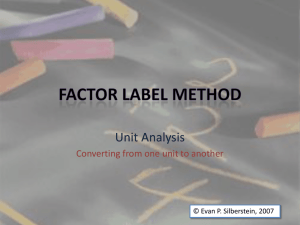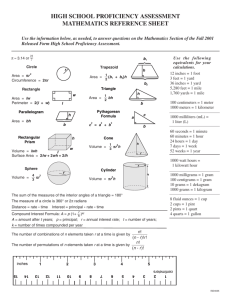Math Review PPT
advertisement
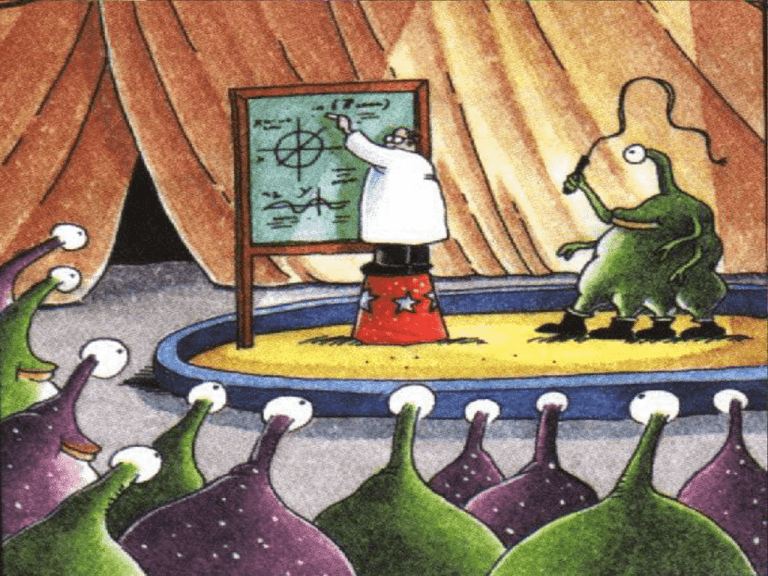
Calculations Without Calculators Pam Shlachtman and Kathryn Weatherhead NSTA Boston 2008 The Problem: How do we help our students achieve success on AP Environmental Science Exams when they cannot use calculators? Solutions: 1.Teach your students to use exponents whenever numbers are especially large or small. Scientific notation is a way to express, numbers the form of exponents as the product of a number (between 1 and 10) and raised to a power of 10. 650 000 6.5 x 105 0.000543 5.43 x 10-4 In scientific notation remember to have one number to the left of the decimal and to use correct significant figures. 2. Practice math manipulations with exponents • When adding or subtracting numbers with exponents the exponents of each number must be the same before you can do the operation. Example: (1.9 x 10-3) – (1.5 x 10-4 ) (19 x 10-4 ) - (1.5 x 10-4 ) = 17.5 x 10-4 When multiplying numbers with base 10 exponents, multiply the first factors, and then add the exponents. Example, (3.1 x 105) (4.5 x 105) = 13.95 x 1010 or 1.4 x 1011 When dividing numbers, the exponents are subtracted, numerator exponent minus denominator exponent. Example: 9 x 10 5 = 3 x 10 2 3 x 10 3 3. Use Dimensional Analysis or factor/label method for calculations The following formula based on the cancellation of units is useful: Given Value x Conversion factor =Answer 1 OR old unit x new unit = new unit 1 old unit Example: 25 ft x 1 yd x 1.094 m = 9.117 meters 3 ft 1 yd How to Convert Units Made Easy Converting 10 inches to centimeters 10.0 in = cm We start by writing down the number and the units given and units of what we want Our conversion factor for this is Then 1 in = 2.54 cm. 2.54 cm = 1 in 1 Multiplying by 1 does not change the value! Converting Inches to centimeters 10.0 in = cm Our conversion factor for this is 1 in = 2.54 cm. Converting Inches to centimeters 10.0 in 2.54 cm = 1 in cm Our conversion factor for this is 1 in = 2.54 cm. Since we want to convert to cm, cm goes on the top. Converting Inches to centimeters 10.0 in 2.54 cm = 1 in cm Our conversion factor for this is 1 in = 2.54 cm. Since we want to convert to cm, cm goes on the top. Inches go on the bottom and are cancelled Converting Inches to centimeters 10.0 in 2.54 cm = cm 1 in Leaving us with cm – the unit we want. Converting Inches to centimeters 10.0 in 2.54 cm = 25.4 cm 1 in Since the unit is correct, all that is left to do is the arithmetic... The Answer Even though we have two different numbers and two different units, they represent the exact same length. You can check this by looking at a ruler – find the 10 in mark and directly across at the cm side. What number do you find? A more complex conversion km to m hr s In order to work a NSCI 110 homework problem, we need to convert kilometers per hour into meters per second. We can do both conversions at once using the same method as in the previous conversion. A more complex conversion km to m hr s 80 km hr Step 1 – Write down the number and the unit! A more complex conversion km to m hr s 80 km 1 hr hr 3600 s m = s First we’ll convert time. Our conversion factor is 1 hour = 3600 sec. Since we want hours to cancel out, we put it on the top. A more complex conversion km to m hr s 80 km 1 hr 1000 m hr 3600 s 1 km m = s Next we convert our distance from kilometers to meters. The conversion factor is 1 km = 1000 m. Since we want to get rid of km, this time it goes on the bottom. A more complex conversion km to m hr s 80 km 1 hr 1000 m hr 3600 s 1 km m = s Now comes the important step – cancel and collect units. If you have chosen the correct conversion factors, you should only be left with the units you want to convert to. A more complex conversion km to m hr s 80 km 1 hr 1000 m = hr 3600 s 1 km 80,000 m 3600 s Since the unit is correct, we can now do the math – simply multiply all the numbers on the top and bottom, then divide the two. A more complex conversion km to m hr s 80 km 1 hr 1000 m = hr 3600 s 1 km 80,000 m m = 22 s 3600 s The Answer!! 4. Be sure to know how to convert numbers to percentages and percent change. Example: If 200 households in a town of 10000 have solar power, what percent does this represent? 200/10000 x 100%= ? Example: If a city of population 10,000 experiences 100 births, 40 deaths, 10 immigrants, and 30 emigrants in the course of a year, what is its net annual percentage growth rate? 5. Keep it simple. They don’t expect you to do calculus! Try reducing the fraction from the previous problem 200/1000 to 2/10= 1/5 Then solve: 1/5 x 100%= 20% 6. Remember that the numbers will likely be simple to manipulate. • The APES folks know you only have limited time to do 100 multiple choice and 4 essays • If you are getting answers like 1.365, then it is likely wrong 7. Show ALL of your work and steps of calculations, even if they are too simple. 8. Show all of your units, too! Numbers given without units are often not counted even if correct. 9. Answers should make sense! LOOK them over before you finish Example: No one is going to spend 1 billion dollars per gallon of water! 10. Know some basic metric prefixes for simple conversions Giga G 10 9 = 1 000 000 000 Mega M 10 6 = 1 000 000 Kilo k 10 3 = 1 000 10 0 =1 Base (m, l, g) Milli m 10 -3 = .001 Micro μ 10 -6 = .000 001 Nano Centi n c 10 -9 = .000 000 01 10 -2 = .01 Conversions from US to metric will probably be given and do not need to be memorized. They should be practiced, however. Gallons to Liters Liters to Gallons Meters to Yards Yards to Meters Grams to Ounces Ounces to Grams Kilograms to Pounds Pounds to Kilograms Miles to Kilometers Kilometers to Miles 1 gal= 3.8 L 1 L, l= .264 gal 1 m= 1.094 yd 1 yd= .914 m 1 g= .035 oz 1 oz= 28.35 g 1 kg= 2.2 lb 1 lb= 454 g 1 mi= 1.609km 1 km= .621 mi 11. Know some simple energy calculations 12. Remember some other common formulas like the Rule of 70 The growth rate (in %) for a given period into 70 then you will get the crude population doubling period for that population. Number of years to double= 70 / annual percentage growth rate 13. Be able to calculate half life Example: A sample of radioactive waste has a halflife of 10 years and an activity level of 2 curies. After how many years will the activity level of this sample be 0.25 curie? 14. Know how to graph data • Title the graph • Set up the independent variable along the X axis Study Time 100 • • • Set up the dependent variable along the Y axis Label each axis and give the appropriate units Make proportional increments along each axis so the graph is spread out over the entire graph area Grade Percentages on Tests 90 80 70 60 50 40 30 20 10 0 1 2 3 4 Hours per Week • Plot points and sketch a curve if needed. Use a straight edge to connect points unless told to extrapolate a line. • Label EACH curve if more than one is plotted. 5 6 15. Know what is meant by “per capita” when solving a problem or interpreting a graph 16. Be able to interpolate and extrapolate data Powerpoint available at Kathryn Weatherhead’s website: http://web.beaufort.k12.s c.us/education/staff/ staff.php?sectiondetailid =5121


